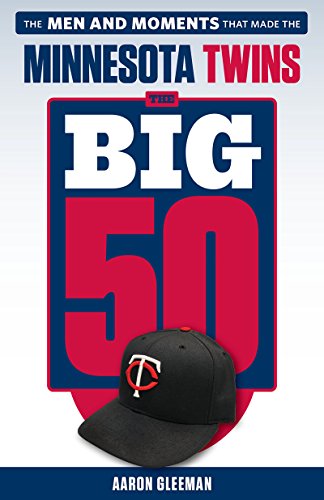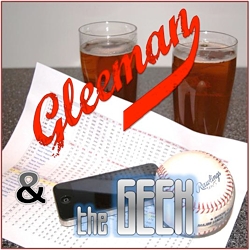March 3, 2008
Top 40 Twins Prospects of 2008: 10, 9, 8, 7, 6
10. Ben Revere | Center Field | DOB: 5/88 | Bats: Left | Draft: 2007-1
YEAR LV PA AVG OBP SLG HR XBH BB SO
2007 RK 216 .325 .388 .461 0 16 13 20
The Twins took Kentucky high schooler Ben Revere with the 28th overall pick in June's draft and the selection was roundly criticized. Revere was viewed by many draft experts as a second- or third-round talent and the Twins were able to sign him for a $750,000 bonus that ranked as the smallest given to any first-round pick since 1997. It reeked of a cost-cutting selection and the organization already had plenty of slap-hitting speedsters, including 2002 first-round bust Denard Span.
Those criticisms may ultimately still prove valid, but Revere quickly muted them and separated himself from Span by hitting .325/.388/.461 at rookie-ball after signing. Baseball America pegged Revere as the fastest player in the 2007 draft and he showed off his elite wheels with 10 triples and 21 steals in 50 games. He failed to homer in 216 trips to the plate, but sliced enough balls into the gaps to race into 16 extra-base hits and a .136 Isolated Power that was above average in the Gulf Coast League.
Revere's ceiling is limited because he's unlikely to develop significant power, but with game-changing speed on the bases and excellent range in center field he can still make an impact without much pop. Developing more patience at the plate will be crucial, because pitchers won't be afraid to throw him strikes, and he'll need to continue making plenty of contact to take advantage of his speed. Revere's upside is light for a first-round pick and he's got a long road to the majors, but so far so good.
9. Wilson Ramos | Catcher | DOB: 8/87 | Bats: Right | Sign: Venezuela
YEAR LV PA AVG OBP SLG HR XBH BB SO
2006 RK 172 .286 .339 .435 3 16 12 14
2007 A- 316 .291 .345 .438 8 26 19 61
Signed out of Venezuela as a 16-year-old in 2004, Wilson Ramos made his pro debut at rookie-ball in 2006 and hit .286/.339/.435 with three homers, 16 total extra-base hits, and a 14-to-12 strikeout-to-walk ratio in 46 games. Between beginning 2007 in extended spring training and being shut down in August due to a thumb injury, Ramos played full-season ball as a 19-year-old and hit .291/.345/.438 with eight homers, 26 total extra-base hits, and a 61-to-19 strikeout-to-walk ratio in 73 games at low Single-A.
Adjusting for the context of his age, level of competition, defensive position, and offensive environment, Ramos' performance was the best of any position player in the Twins' minor-league system. A .783 OPS from a teenager manning the most demanding defensive position in a pitcher-friendly full-season league is far more impressive than it appears, and when you toss in Ramos' similarly strong debut at rookie-ball and sterling defensive reputation it's easy to see that he's incredibly promising.
Teenage catchers are notoriously difficult to project and have an amazing wash-out rate, but Ramos has hit .290 through his first 119 pro games, gunned down 41 percent of would-be basestealers last season, and has shown the potential for significant power development down the road. He's likely at least three years away from even sniffing the majors, but has flashed the skills that could eventually make talk of moving Joe Mauer out from behind the plate somewhat reasonable.
8. Philip Humber | Starter | DOB: 12/82 | Throws: Right | Trade: Mets
YEAR LV G GS ERA IP H HR SO BB
2005 A+ 14 14 4.99 70.1 74 6 65 18
2006 A+ 7 7 2.37 38.0 24 4 36 9
AA 6 6 2.88 34.1 25 4 36 10
2007 AAA 25 25 4.27 139.0 129 21 120 44
Philip Humber went 35-8 with a 2.80 ERA and 422 strikeouts in 353 innings during three seasons at Rice University, winning national Freshman of the Year honors in 2002 and a College World Series title in 2003. Selected by the Mets with the third overall pick in the 2004 draft, Humber was just 15 starts into his pro career when he joined the long list of pitchers from his alma mater to suffer a major arm injury after racking up huge pitch counts in college, undergoing Tommy John elbow surgery in mid-2005.
He returned to the mound a year later, posting a 2.83 ERA, 79-to-20 strikeout-to-walk ratio, and .199 opponent's batting average in 76.1 innings between high Single-A and Double-A despite a noticeable drop in velocity, but the lost miles per hour caught up to him last season. Humber had a 4.27 ERA in 25 starts at Triple-A, striking out just 120 batters in 139 innings while serving up 21 homers, and was then knocked around in a brief late-season stint in New York.
Traded to the Twins as part of the package for Johan Santana, Humber now looks like a mid-rotation starter rather than the potential ace the Mets drafted. His curveball remains an excellent offering, but as a fly-ball pitcher whose post-surgery fastball no longer overpowers hitters Humber figures to have trouble keeping the ball in the ballpark. Already 25 years old, the 6-foot-4 right-hander will get a chance to claim a rotation spot soon, but could end up in the bullpen long term.
7. Jeff Manship | Starter | DOB: 1/85 | Throws: Right | Draft: 2006-14
YEAR LV G GS ERA IP H HR SO BB
2006 RK 2 0 0.00 5.2 3 0 10 1
A+ 4 3 2.08 8.2 7 0 12 2
2007 A- 13 13 1.51 77.2 51 4 77 9
A+ 13 13 3.15 71.1 77 5 59 25
Considered an elite high-school recruit, Jeff Manship's career at Notre Dame was sidetracked by an elbow injury that required Tommy John surgery in 2004. He missed all of that season and most of the next, but returned at full strength in 2006 with a 3.26 ERA and 111-to-28 strikeout-to-walk ratio in 94 innings. A draft-eligible sophomore that June, Manship had leverage thanks to the ability to return to school and reportedly fell out of the early rounds because of concerns about his bonus demands.
The Twins took him in the 14th round and handed him a third-round bonus worth $300,000, watching as Manship posted a 1.26 ERA and 22-to-3 strikeout-to-walk ratio in his 14-inning pro debut. He began last year by dominating low Single-A with a 1.51 ERA and 77-to-9 strikeout-to-walk ratio in 77.2 innings, but struggled some after a midseason promotion to high Single-A. His 3.15 ERA there looks good, but the 59-to-25 strikeout-to-walk ratio in 71.1 innings was poor and opponents hit .270 against him.
Manship threw more innings last season than he did in the previous three seasons combined, so it's possible that he ran out of gas at Fort Myers. Whatever the case, simply staying healthy while throwing 150 innings with a 2.30 ERA and 136-to-34 strikeout-to-walk ratio qualifies as a hugely successful first full season. Manship's lack of overpowering raw stuff likely limits his upside to mid-rotation starter, but he's missed plenty of bats, throws strikes, and does a great job keeping the ball on the ground.
6. Kevin Mulvey | Starter | DOB: 5/85 | Throws: Right | Trade: Mets
YEAR LV G GS ERA IP H HR SO BB
2007 AA 26 26 3.32 151.2 145 4 110 43
Kevin Mulvey sliced his ERA from 5.29 to 4.65 to 3.61 in three years at the Villanova University, posting an 88-to-23 strikeout-to-walk ratio in 92.1 innings during his final season. Selected by the Mets in the second round of the 2006 draft, Mulvey headed right to Double-A after signing and had a 1.35 ERA in three starts. Back at Double-A last year, Mulvey posted a 3.32 ERA and 110-to-43 strikeout-to-walk ratio in 151.2 innings before tossing six shutout innings in a late-season start at Triple-A.
Chosen as the organization's Minor League Pitcher of the Year in his first full season, Mulvey was sent to the Twins as part of the deal for Santana. While overlooked within the four-player haul that the Twins received, Mulvey should be MLB-ready at some point this season and projects as a mid-rotation starter despite modest strikeout totals. He's able to succeed despite relatively few missed bats because he does a tremendous job keeping the ball on the ground and in the ballpark.
Mulvey has served up just five career homers in 718 plate appearances spread over 173 innings while inducing nearly two ground balls for every fly ball. He's been especially tough on right-handed batters, holding them to a .224/.275/.274 hitting line and zero homers in 339 at-bats last year, and allowed a Luis Castillo-like .082 Isolated Power overall. He doesn't have Humber's big name or Deolis Guerra's high ceiling, but Mulvey could easily end up as the best pitcher acquired for Santana.

